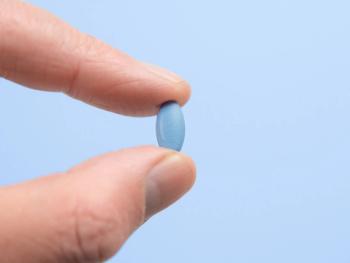
6 Pearls to Consider When Treating Pediatric Bipolar Disorder
The author shines a light on a preventative treatment for both children and adults.
RESEARCH UPDATE
In some respects, lithium seems like an ideal choice for the treatment of pediatric bipolar disorder. Its preventative properties surpass those of other mood stabilizers, and many consider it a
There is good data that supports both of these opposing views, and this two-part series will take a closer look at that research. The picture that emerges will reveal some useful pearls-not just about lithium-but about the diagnostic approach to bipolar disorder in children and adolescents.
The promise of lithium in pediatric bipolar disorder
Bipolar disorder progresses in stages:
Stage 0: Risk factors, such as family history, but no symptoms.
Stage 1:
Stage 3: First episode and recurrence.
Stage 4: Frequent episodes, treatment resistance, and a clinical picture marked by
Psychiatrists have an opportunity to prevent that progression through early intervention, and lithium seems uniquely suited to that task. Here’s why:
1. Lithium is superior for long-term prevention. Lithium rarely shines in short-term trials, but it often outperforms other mood stabilizers in long-term maintenance studies. In adults, a large network meta-analysis concluded that the overall profile of lithium made it the best option for the maintenance phase of bipolar I disorder,3 and pediatric data is also promising. In an 8-year naturalistic study of 115 children, lithium was the only treatment that predicted recovery from bipolar I disorder.5
2. Lithium works best when started early. Patients who start lithium after their first manic episode are more likely to respond to it, according to retrospective analysis of 4714 patients with bipolar I disorder.4 Because of its preventative properties, lithium responders have a better chance of remaining well and avoiding progression toward the end-stage of the illness.2
3. Lithium prevents suicide. Depression and impulsivity can be a fatal mix, and the risk of suicide is elevated 20- to 30-fold in bipolar disorder.6 That risk is 6 times lower in patients who are prescribed lithium, according to multiple studies involving over 500,000 person years. Other mood stabilizers do not seem to have this benefit.7,8
4. Lithium prevents hospitalizations. Lithium prevents both psychiatric and medical hospitalizations in patients with bipolar disorder more than antipsychotics and other mood stabilizers, according to two retrospective analyses with a total N of 53,000.9,10
5. Lithium has medical benefits. On average, bipolar disorder reduces the lifespan by 9 years. Most of that mortality (82%) is due to medical problems, primarily heart disease, stroke, cancer, diabetes, and COPD.11 Lithium lowers several of those risks, specifically stroke, heart attacks, and cancer.12 Those benefits provide some counterbalance to the most serious risk of renal insufficiency that may result from lithium. Atypical antipsychotics, on the other hand, worsen many of the medical problems that people with bipolar disorder are prone to, and offer few medical benefits to offset those risks.
6. Lithium improves longevity. From antipsychotics to anticonvulsants, people with bipolar disorder tend to live longer when they treat the illness, regardless of the medication.11 Lithium, however, is unique in that it lowers mortality rates in both bipolar patients and in the general population.12 The mechanism behind that effect is not clear, but it may involve preservation of
7. Lithium is neuroprotective. While most psychiatric medications enhance neuroplasticity in the amygdala and hippocampus, lithium’s neuroprotective properties extend across multiple regions of the brain.14 Through these properties, lithium might preserve cognitive function and prevent the loss of brain volume associated with end-stage bipolar disorder.2 We await final proof of that hope, but at least in dementia we have five clinical trials showing preventative effects with low dose lithium.15 These findings are encouraging for children with developing brains, and lithium response in adolescents has been linked to neuroplastic changes in regions associated with emotion processing.16
Lithium looks promising for childhood bipolar disorder when we take a long-term perspective, and it is FDA-approved in children aged 12 years and over. So why isn’t it prescribed more often in the pediatric population? Lithium’s star begins to fade when we turn to short-term studies of childhood mania.1 Within those trials, however, is a subgroup of young patients who respond very well to lithium, and I’ll attempt to identify them in the next installment of this series.
Disclosures:
Dr. Aiken is the Director of the
References:
1. Peruzzolo TL, Tramontina S, Rohde LA, et al.
2. Berk M, Post R, Ratheesh A, et al.
3. Miura T, Noma H, Furukawa TA, et al.
4. Kessing LV, Vradi E, Andersen PK.
5. Geller B, Tillman R, Bolhofner K, et al.
6. Malhi GS, Outhred T, Das P et al.
7. Tondo L, Baldessarini RJ.
8. Song J, Sjölander A, Joas E, et al.
9. Tiihonen J, Tanskanen A, Hoti F, et al.
10. Joas E, Karanti A, Song J, et al.
11. Crump C, Sundquist K, Winkleby MA, et al.
12. Post RM.
13. Powell TR, Dima D, Frangou S, et al.
14. Hajek T, Weiner MW.
15. Mauer S1, Vergne D2, Ghaemi SN.
16. Kafantaris V, Spritzer L, Doshi V et al.
Newsletter
Receive trusted psychiatric news, expert analysis, and clinical insights — subscribe today to support your practice and your patients.













